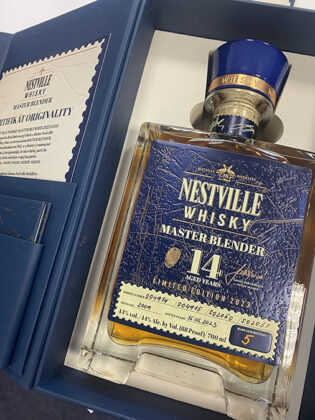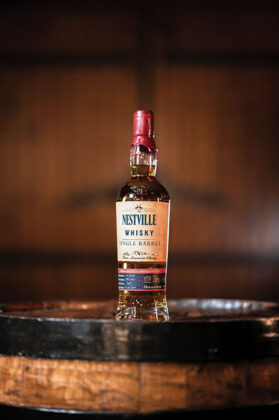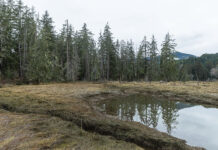
Between Hungary to the south and Poland and the Czech Republic to the north, Slovakia has traditionally been regarded as one of the “vodka belt” countries. “Never in a million years did I think Slovakians would convert to drinking whisky,” says Lucia Jakubikova, the head technologist and master distiller at Nestville Distillery in Hniezdne, Slovakia — the first, and so far only, whisky distillery in the country. “And here we are, releasing our 14-year-old Master Blender Edition this year.”
Having spent her career trying to produce a high-quality neutral grain spirit, Jakubikova’s background in biotechnology came in handy. After finishing her PhD in microbiology, she was offered a position as a fermentation technologist at Nestville’s sister company GAS Familia, specializing in the production of vodka. That’s where she gained valuable experience producing not just GNS but also fruit distillates and brandy. For Jakubikova to be involved in making a new spirit and have a chance to shepherd the first Slovakian whisky right from a distillery’s very first mash is an exciting opportunity.
When Marian Gurega, the founder of Nestville Distillery, introduced his plan to make whisky to his team in 2006, they had a number of questions. Would the vodka-centric nation change its drinking habits? Would the quality of the final product be comparable to whiskies from around the world? But Gurega understood the domestic market and knew there was a thirst for something different and new. He had the idea of a whisky distillery firmly locked in his mind, and the long journey to establishing Nestville Distillery began.
Nestville Distillery’s whisky production started in 2008, when the first barrels were filled with grain distillate made from malted barley and wheat. “The first barrels that came to us were 36 700-liter new French oak barrels, 36 700-liter new Slavonian oak barrels, and 55 500-liter old sherry barrels from Spain. At the turn of March and April 2008, we filled the barrels with distillate in a volume of 36,625 liters. What followed was an impatient waiting and a childlike joy,” said Jakubikova. The following year, Nestville purchased 900 200-liter new American white oak barrels from Louisville, Kentucky, which were filled in 2011, and increased the warehouse capacity to 216,625 liters. The distillery also started to experiment with different mashbills, including rye and corn.
Location and Regional History
The distillery sits in the picturesque village of Hniezdne, only three miles to the west of Stará Ľubovňa, Spiš County. It is surrounded by the majestic peaks of the Tatra Mountains, the highest mountain range in Slovakia. The name Nestville is a combination of the English words nest and village, which is a literal translation of the Slovakian name Hniezdne. The Nestville branding features a pair of storks, birds that regularly nest in the area and are a part of Hniezdne’s emblem.
The Spiš County region is located in the northern part of Slovakia and has always been famous for its alcohol industry: first, due to its agricultural production at higher altitudes, the main crops are winter wheat and barley, and second, because of its strategic location with trading routes to Poland. As indicated by archival records published in Spiš. K Dejinám Liehovarníctva a Ovocinárstva (Spis County: On the History of Distilling and Pomiculture), a distillery which once operated within the walls of the Ľubovňa Castle a stone’s throw from the Nestville Distillery specialized in the production of a spirit called gorzalka. The old stone-walled distillery was described as “a four-room building with water piping, a well, and a room for cleaning the grains used for distillation.”
Based on records dating back to 1747, part of the grain harvest was given to the “gorzelniks” who then transformed it into gorzalka — a spirit made of wheat, rye, barley and other grains, distilled in a simple pot still and stored in wooden barrels. Gorzalka bore a lot of similarities to many whiskies produced around the world at the time. “In keeping with old methods of distillation 300 years ago, gorzalka from regions of Eastern Europe and Scotch whisky were probably more similar than Scotch and bourbon are today,” explains Jakubikova.
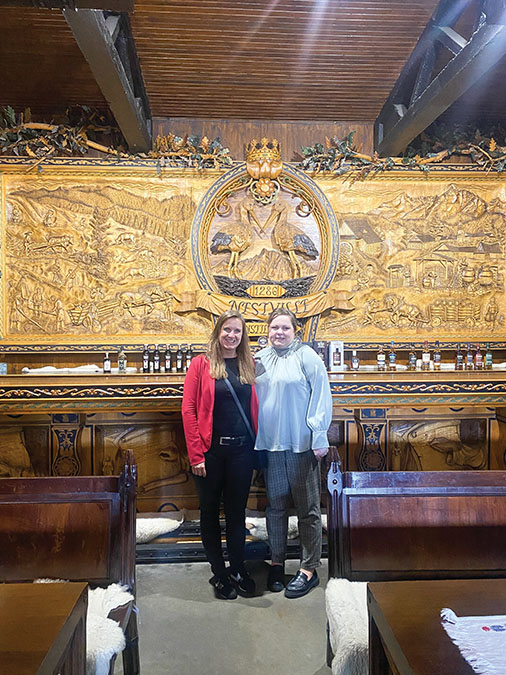
Production and the Art of Barrel Aging
In the crowded world of whisky, it’s important to stand out, especially for newcomers like Nestville Whisky. Diligence and dedication to detail in distilling stands at the forefront of whisky production at Nestville, and the distillery’s approach to local distilling heritage is undeniable. The distillery was built as a multifunctional site for production of vodka, borovicka (juniper spirit native to Slovakia) and fruit brandies, and later adjusted to whisky production. Interestingly, the distillery also produces Spisska Borovicka, which holds the protected geographical indication and uses the same water source from the sub-Tatra region as Nestville Whisky.
The whole design of the distillery allows for flexibility to process any kind of grain as a base. “One might think that our seven-column distillation process is a disadvantage when making whisky, because it can strip out the grain character from the spirit,” said Jakubikova. “Over the years of learning and experimenting, we perfected the distillation process to the point where we control which chemical compounds and in what quantities we want to maintain in the distillate.” The distillery’s modern technology and on-site laboratory allow it to perform qualitative evaluation of each batch to compare individual samples and ensure consistency.
Nestville also has its own on-site floor malting in the old preserved malthouse, where malting is carried out in the traditional way. “We are lucky enough to be able to do our own on-site malting, which allows us to experiment with malting different grains, not just barley. We also use different types of wood to smoke the malt — for example the wood from fruit trees,” adds Jakubikova. Another unusual practice at Nestville is the use of triticale, a hybrid of wheat and rye, which is a popular grain in the region of Northern Slovakia because it survives in colder climates and has a high starch content.
During maturation, things take on a more contemporary edge. Nestville Distillery experiments with several unusual types of wood common to central Europe, including cherry, mulberry, black locust, and horse chestnut, to achieve unique flavor profiles. This is thanks to a fairly broad definition of whisky by the European Union, which allows “maturation of the final distillate for at least three years in wooden casks not exceeding 700 litres capacity.”
When it comes to the barrel finish, the distillery uses common barrels like sherry or wine casks, as well as those that previously held their own craft beer, gin, or brandy. “We want to bring new exotic flavors to the table and continue in our journey to create unique limited editions with unusual wood finishes, different percent ABV, and wood barrel types,” says Jakubikova. Before being placed in barrels, Nestville whisky is diluted to 65% ABV. After about three years of aging, the distillate loses about 3% of its alcohol strength and about 8.5% of its volume.
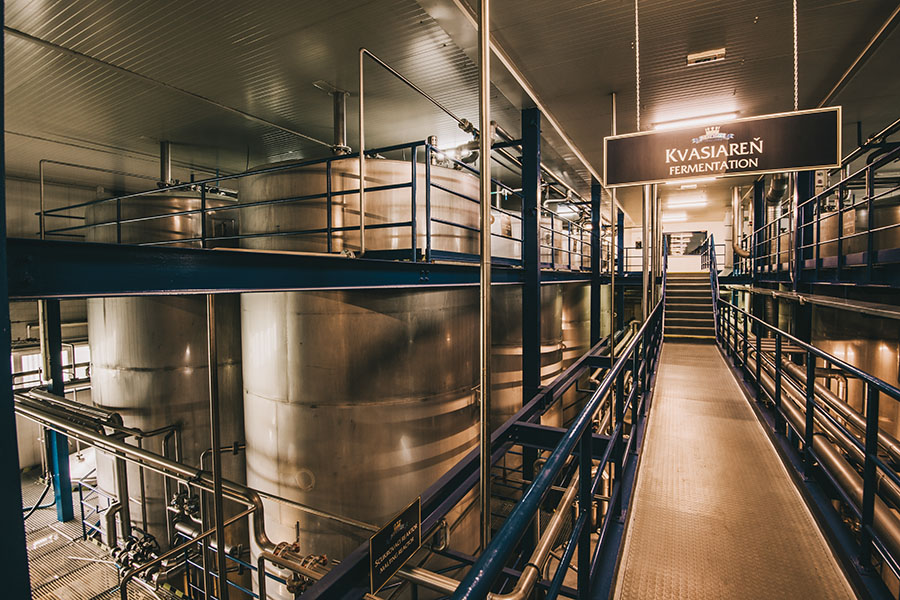
The Whisky Market in Slovakia
Despite the fact that Slovakia’s preferred choice of drink has always been locally produced vodka, fruit brandies and borovicka, the demand for new spirit categories started to be seen after the 1989 Velvet Revolution. When Czechoslovakia split into the Czech Republic and Slovakia, the market was flooded with whiskies, rums and brandies from all over the world. More than three decades later, the whisky category — especially the super-premium category — continues to grow and attract new consumers in Slovakia. According to the latest data from IndexBox, the Slovak whisky market increased by 37% in 2022 and recorded a pronounced expansion, which allowed Nestville to increase its production capacity. Nestville today has a production capacity of 4,000,000 liters, with the average year-on-year capacity growth of 1,200,000 liters. The distillery’s barrelhouse now holds more than 20,000 barrels.
The whiskies produced at Nestville have found favor not just with domestic consumers but international markets, too. Nestville’s whiskies are exported to more than 20 countries worldwide. “Taking into consideration the size of Slovakia (the current population of Slovakia is 5.4 million) and its relatively small spirits market, most of our whisky production is exported internationally,” says Jakubikova.
The brand’s core range includes three-year-old, six-year-old, nine-year-old, and 12-year-old 40% ABV blended expressions; a 43% ABV single malt; 40% and 43% ABV single barrel bottlings, and a cask strength bottling, which rests at 63.9% ABV. The distillery also produces a variety of limited release whiskies, including the Nestville Master Blender editions and Nestville Bourbon & Wine Single Barrel.
You can expect soft whisky with delicate sweetness, notes of vanilla, and ginger heat, enhanced by a touch of cereal maltiness. “Our original aim was to create whisky that was light and easy to drink. We wanted to attract a broad spectrum of consumers. Soon enough we realized that a good whisky needs to stand out; that’s when we started to experiment with different types of grain distillates and began to use barrels made from atypical wood,” explains Jakubikova.
If you ever find yourself visiting Slovakia, Nestville Distillery offers an extended tasting tour with a visit to the historical open-air museum exhibition of folk crafts associated with distillation dating back to the 12th century, followed by a visit to the modern part of their distillery. The tour is finished off, of course, by tasting the range of Nestville’s most popular whiskies.

